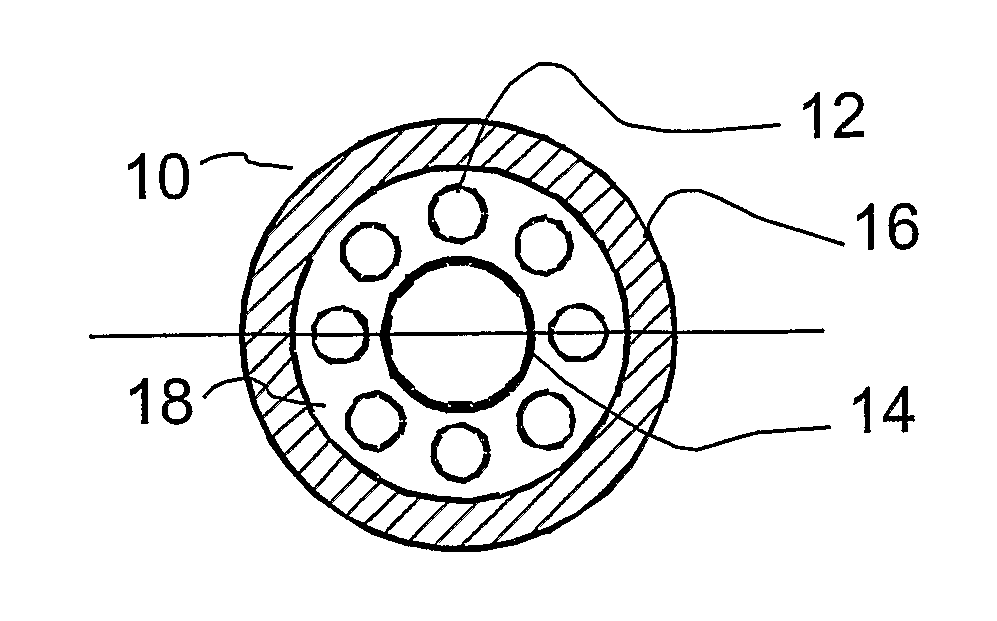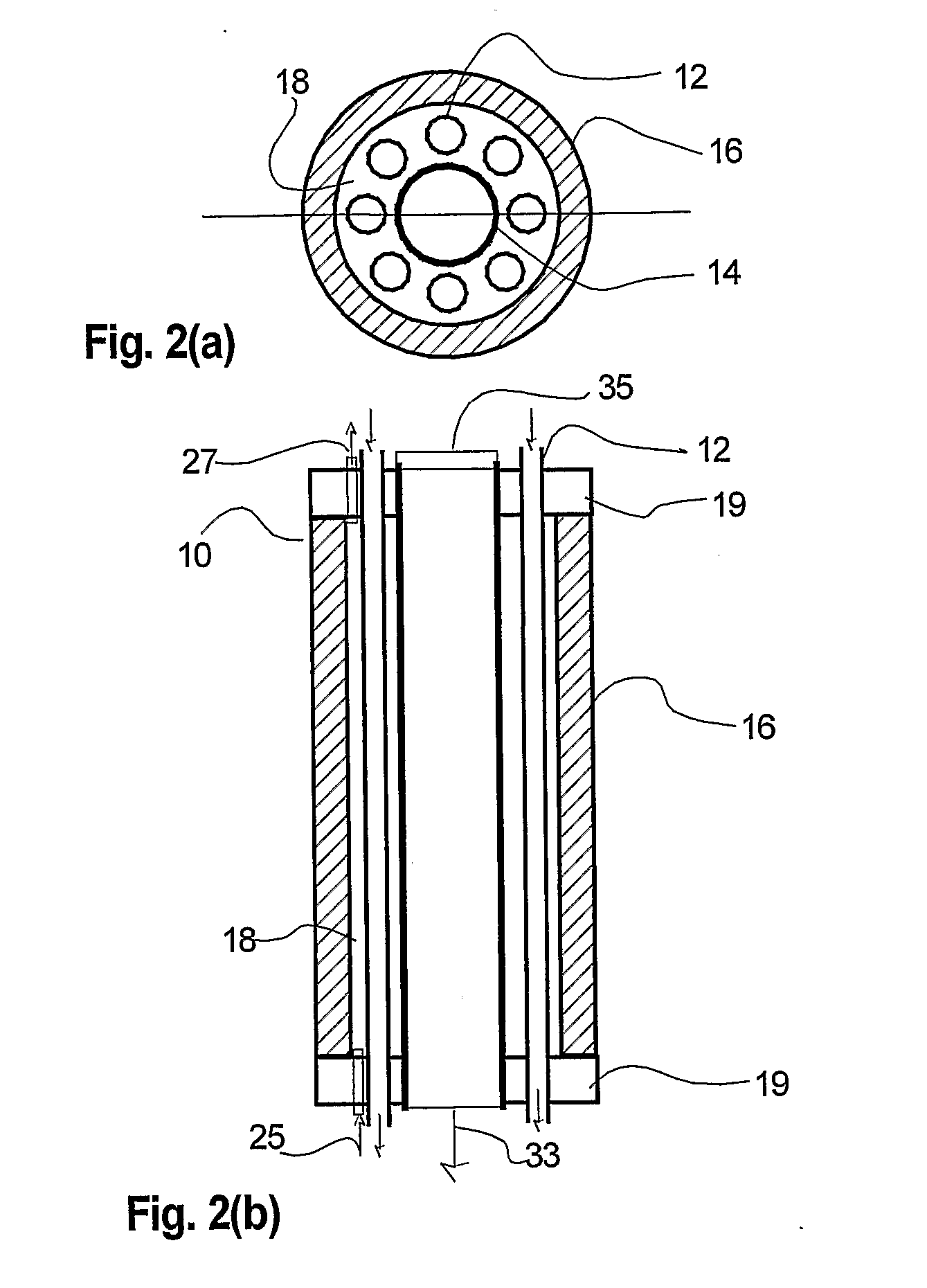Heating Solid Oxide for Fuel Cell Stack
a fuel cell and solid oxide technology, applied in the field of solid oxide fuel cell (sofc) systems, can solve problems such as the burning of firewood due to reactant starvation
- Summary
- Abstract
- Description
- Claims
- Application Information
AI Technical Summary
Benefits of technology
Problems solved by technology
Method used
Image
Examples
second embodiment
[0071] Referring to FIGS. 7-8, the combustion heater 14 is comprised of multiple concentrically arranged tubes that define separate chambers for reactant air flow, combustion air flow, and combustion fuel flow. Referring to FIG. 7, the combustion heater 14 comprises a porous outer tube 150, a dense middle tube 154 located coaxial to and within the outer tube 150; and a porous inner tube 160 located coaxial to and within the middle tube 154. The annular space between the outer and middle tubes 150, 154 define a reactant air heating chamber 164. The annular space between the middle and inner tubes 154, 160 defines a combustion air chamber 162. The space inside the inner tube 160 defines a combustion fuel chamber 163. Combustion fuel and air are controllably mixed and combusted in the combustion air chamber 162 to generate heat which radiates and conducts outwards to heat air flowing through the reactant air heating chamber 164.
[0072] The inner tube 160 is closed at one end and open at...
third embodiment
[0076] Referring to FIG. 9(a), the combustion heater 14 comprises a pair of concentrically arranged tubes, namely the porous outer tube 150 and the dense inner tube 160, and a fuel / air pre-mixer 178 coupled to an inlet end of the inner tube 160. The annular space between the inner tube 160 and outer tube 150 defines a reactant air heating chamber 164, and the space inside the inner tube 160 defines a combustion chamber 165. The inside surface of the inner tube 160 is coated with catalytic material. Combustion fuel supply line 172 and combustion air supply line 174 are coupled to the pre-mixer 178 and supply combustion fuel and air to the pre-mixer 178. The fuel and air are mixed in the pre-mixer 178, and mixed fuel and air are discharged into the combustion chamber 165, where the fuel / air mixture is catalytically combusted. The length of the pre-mixer region is selected so that diffusion is sufficient for mixing. Combustion can also occur within the premixer 178, and thermal insulat...
fourth embodiment
[0078] Referring to FIG. 10, the combustion heater 14 also comprises a pair of concentrically arranged tubes, namely the porous outer tube 150 and the dense inner tube 160, and a flame burner 170 coupled to an inlet end of the inner tube 160. The annular space between the inner tube 160 and outer tube 150 defines the reactant air chamber 164, and the space inside the inner tube 160 defines the combustion chamber 165. Thermal insulation 176 is wrapped around a portion of the inner tube 160 closest in proximity to the flame burner 170. Combustion fuel supply line 172 and combustion air supply line 174 are coupled to the burner 170 and supply combustion fuel and air to the burner 170. The burner 170 is provided with a spark or other suitable igniter that ignites at least some of the fuel and air to produce a flame. Any unburned fuel and air flow into the combustion chamber 165; the inner wall of the combustion chamber can be coated with catalytic material to promote the fuel and air th...
PUM
| Property | Measurement | Unit |
|---|---|---|
| diameter | aaaaa | aaaaa |
| diameters | aaaaa | aaaaa |
| operating temperature | aaaaa | aaaaa |
Abstract
Description
Claims
Application Information
 Login to View More
Login to View More - R&D
- Intellectual Property
- Life Sciences
- Materials
- Tech Scout
- Unparalleled Data Quality
- Higher Quality Content
- 60% Fewer Hallucinations
Browse by: Latest US Patents, China's latest patents, Technical Efficacy Thesaurus, Application Domain, Technology Topic, Popular Technical Reports.
© 2025 PatSnap. All rights reserved.Legal|Privacy policy|Modern Slavery Act Transparency Statement|Sitemap|About US| Contact US: help@patsnap.com



